The future of advertising is user generated. What else are you missing about Gen Z?
The COVID-19 crisis affects people of all ages, directly and indirectly, and often in ways unique to their circumstances. For Generation Z (those born 1997-2012), it is up-ending their formative years, shaking their confidence in the future, and interfering with many of their most important relationships – including how they can relate to their peers.
What should organizations and brands understand about these impacts? And how can you speak to and serve the interests of this important generation?
1 – OCCUPATIONS AND PREOCCUPATIONS
Concerns about the well-being of their loved ones are prominent, but also consider their concerns beyond the health realm. While worries for the nation’s overall economy are more pronounced with older adults (P25+), the adult Gen Z (A18-24) are the age group most concerned with the impact on their personal finances and job security. Those financial concerns are well placed, as young adults are disproportionately at risk of job losses from COVID-19. They also are more likely than other ages to be concerned for the availability of food and resources, and for the impact of school closings and potential unrest.
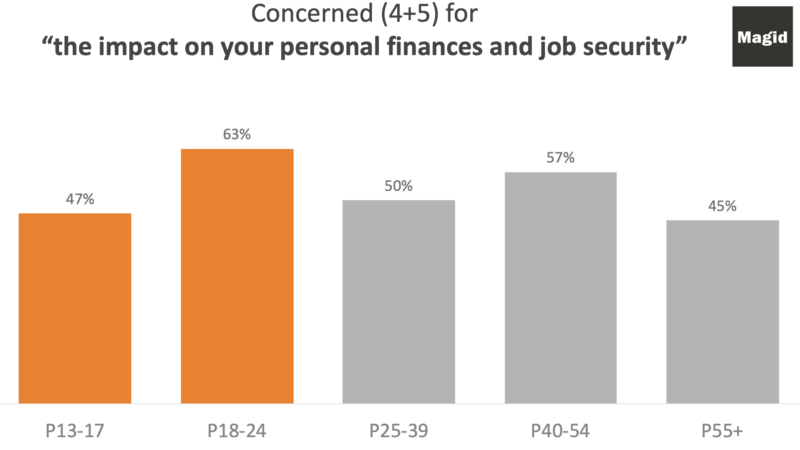
Their social and practical concerns accompany a special intensity of feelings described by Gen Z. A feeling of Boredom is sky high, with other peaks for Annoyed and Lonely. Plus, the top three feelings for adults age 25+ (Anxious, Stressed, and Isolated) are nearly as high for Gen Z.
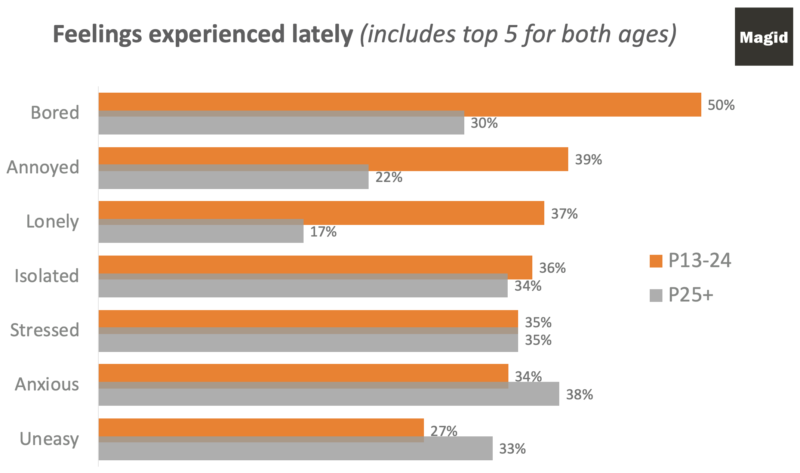
Using our EmotionalDNA® framework, we’ve highlighted across-the-board increases in the desire for Funny content since the start of the crisis. Gen Z now also stands out for wanting content that is Fun, Romantic, Exciting, and Scary – and are more open than older adults to content that is Relatable, Sad, Deep, or Disturbing. This range of appeals may be linked to their higher feelings of boredom and loneliness. It also speaks to a desire for distraction from or help re-framing their COVID-19 experience.
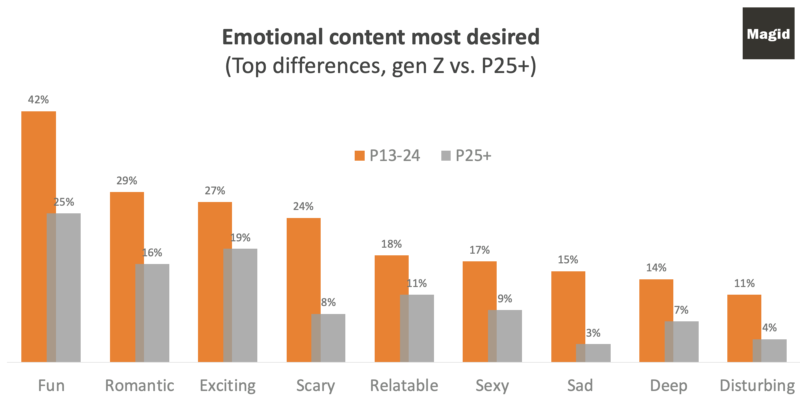
2 – SHARPENING THEIR TOOLS
Coping in the “new normal” has meant especially higher use of social media and even more so for younger Gen Z (P13-17).
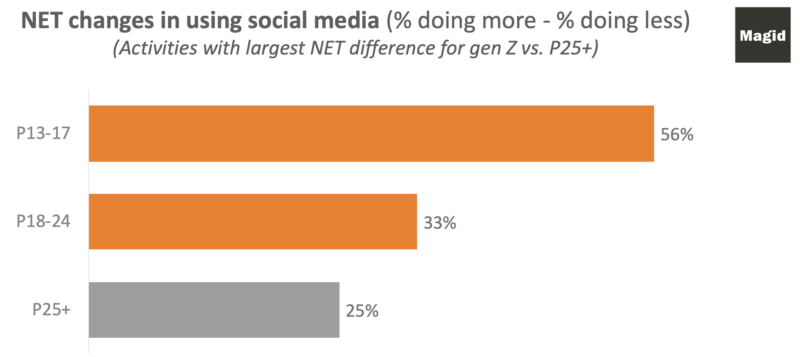
Gen Z’s digital natives know how to make the most of online tools. We have seen and previously spoken on the generation gaps of social app momentum, and gender is also a factor. Through social media, this generation is not only seeing themselves reflected, but are actively defining their social reality, expressing their individualism, and connecting to like-minded others. Often in ways their parents can’t.
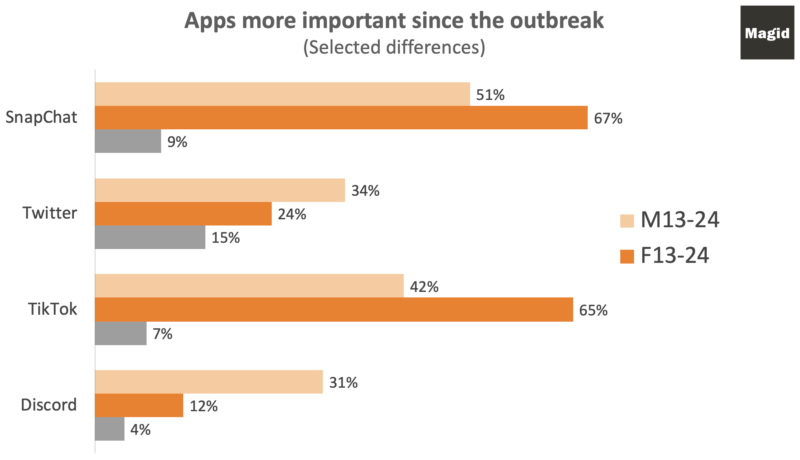
3 – THE BRAND & CONSUMER DISCONNECT
At a time when Gen Z is trying new things at an even higher rate than normal, is current advertising attracting them? Could it be repelling them? While openness to sampling is often characteristic of younger people even in more normal times, consider how the emotional dynamics above are affecting their sampling choices.
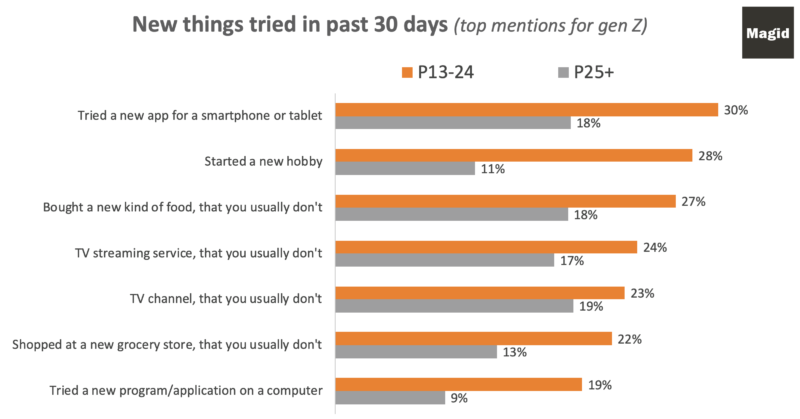
We know Gen Z values brand authenticity and relatability. That translates into delivering on value and putting customer happiness first – not the hard sell, with cost cutting high on the list of what they would like to see more. However, tonality and sense of play are also important: humor is the biggest tone being under-delivered in terms of what’s offered and what they’d like to see. What’s more, generic themes of “Things are different now” and “We know these are hard times” rank as more common than what they’re interested to see. That message has been overplayed.
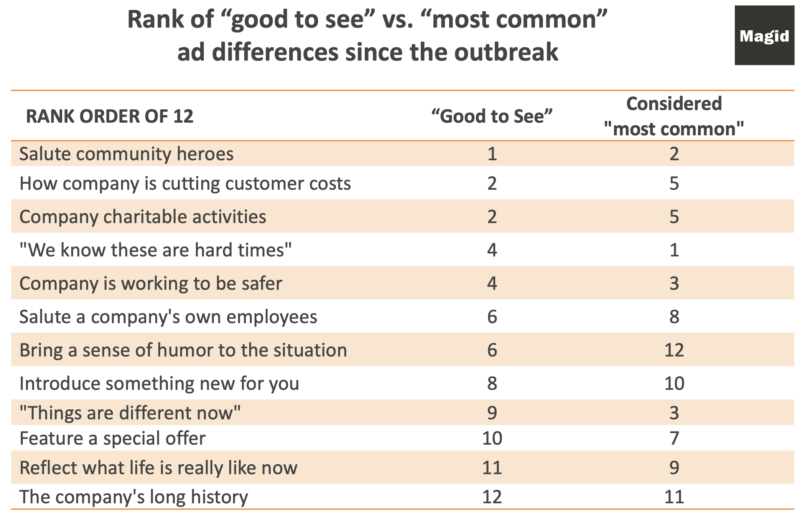
This disconnect between advertising themes and what resonates with Gen Z suggests a sizable blind spot that may be worsening as the crisis continues.
4 – JOINING FORCES
Uberizing Advertising
Consider the realities Gen Z is facing today, financially and emotionally. What actions can brands take? What kind of mutual engagement fits? How can brands get the message out?
With many stuck at home and eager for social connections and creative outlets, this cohort has untapped potential as partners. Consider how tech savvy online talent can rise to a challenge through UGC, UGA (user-generated ads) and other artistic approaches across platforms that resonate with peers and ensure relevance at this defining moment.
The way advertising messages are developed needs to change to serve Gen Z effectively. And that process should involve sustained and dedicated commitments to the new generation’s full imaginative power.
Contributing authors:
Erin McGinnis, Brent Magid, Brian Hansen
Study details: n=769 with Gen Z oversample, 13+ US only, online matched to census for age, gender, race. Fielded April 18-19.
